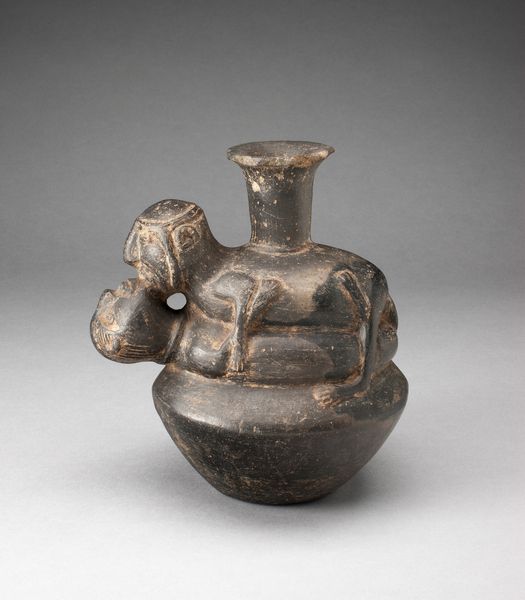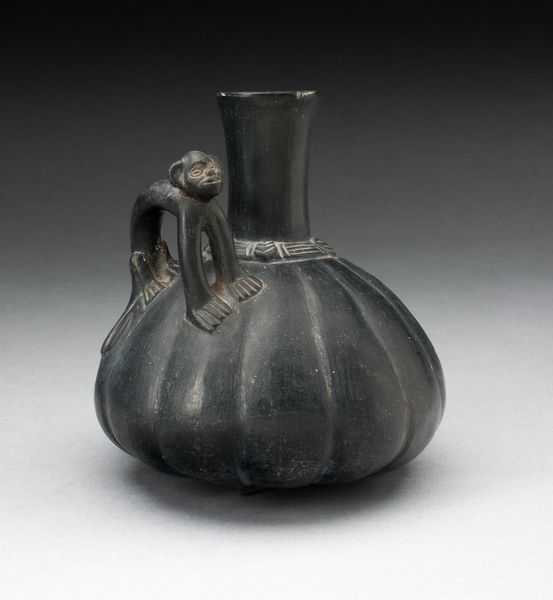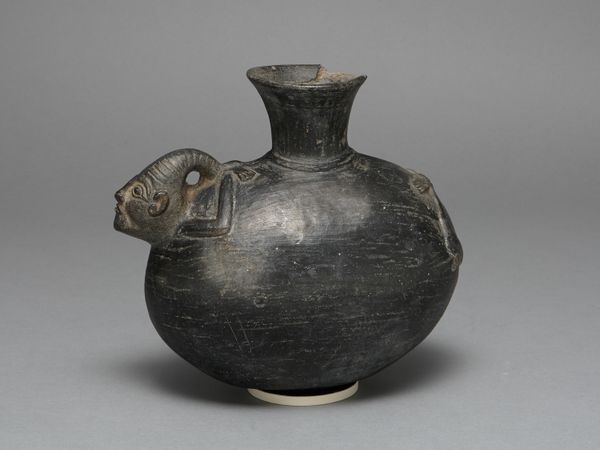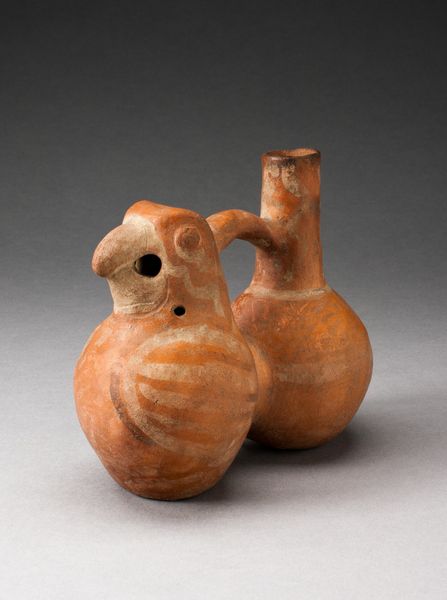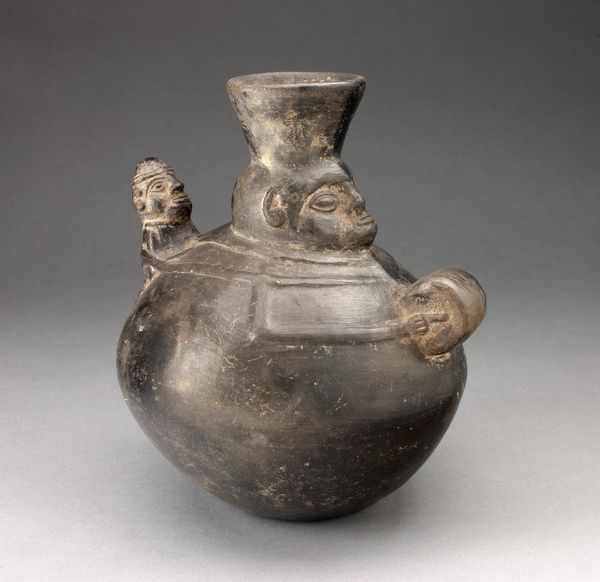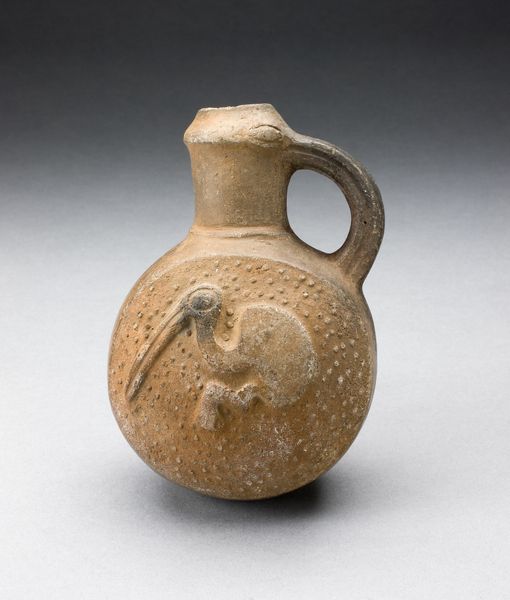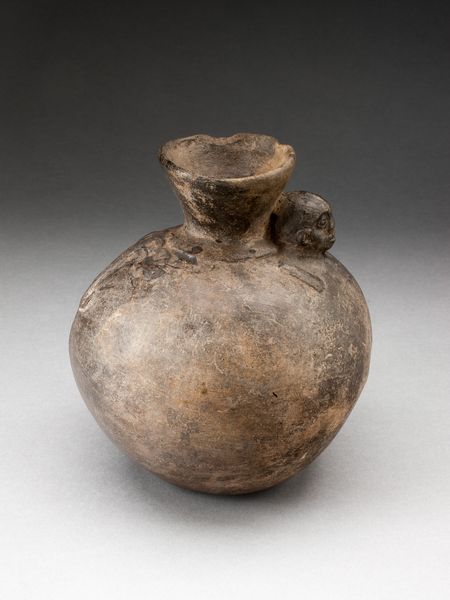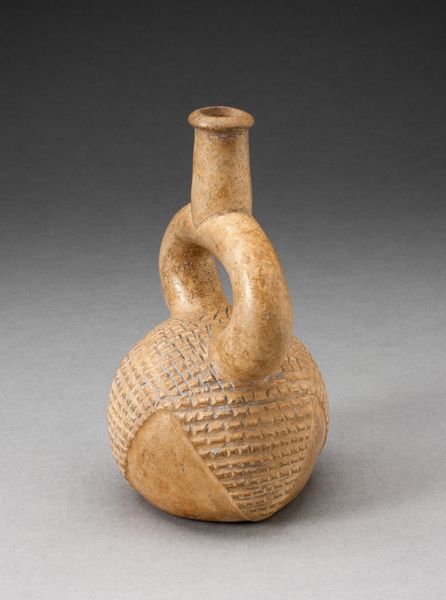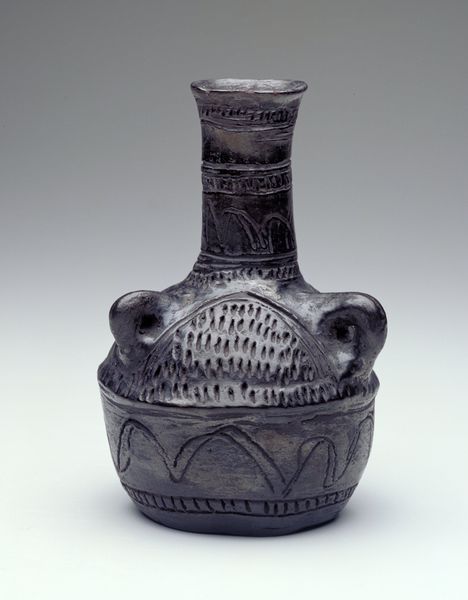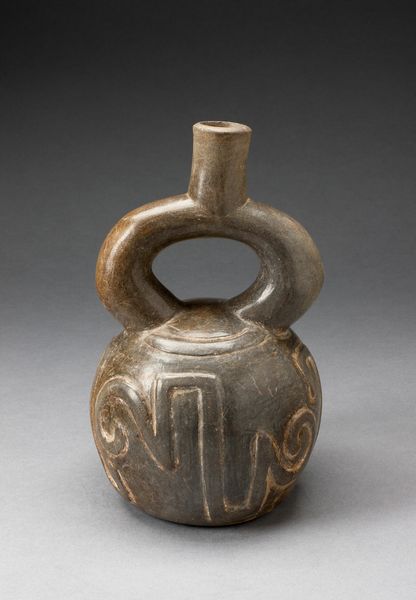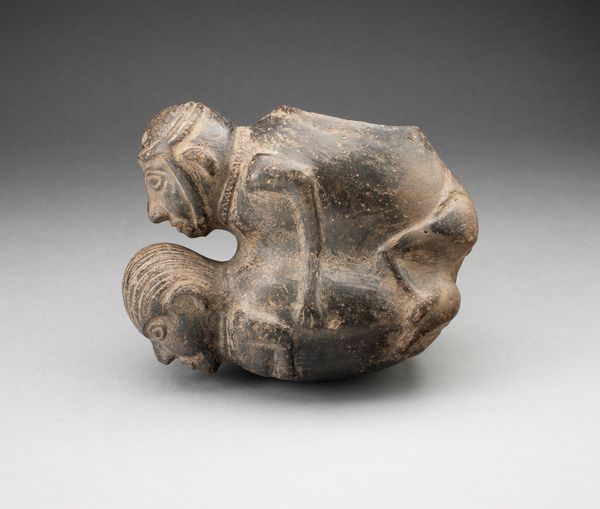
Jug in the Form of a Curled Animal, with Tail in Mouth, Possibly a Feline Possibly 1000 - 1400
0:00
0:00
ceramic, sculpture, terracotta
#
ceramic
#
figuration
#
form
#
sculpture
#
ceramic
#
terracotta
#
indigenous-americas
Dimensions: 20.2 × 18.1 cm (7 15/16 × 7 1/8 in.)
Copyright: Public Domain
Curator: Here we have an intriguing piece titled "Jug in the Form of a Curled Animal, with Tail in Mouth, Possibly a Feline." It's believed to be from the Chimú culture, dating roughly between 1000 and 1400. Editor: Oh, wow. It gives me an immediate impression of ancient secrets, you know? That tight, coiled form is intense, almost like it's guarding a powerful energy. It makes you want to know so much more. Curator: Absolutely. These ceramic vessels often played integral roles in Chimú society, serving in rituals, offerings, and everyday life. Their artistry frequently incorporated zoomorphic forms like this feline, representing potent spiritual forces. The act of the animal biting its tail is particularly symbolic, often denoting cyclical time, totality, and self-sufficiency. Editor: Self-sufficiency, that's perfect! It does have this feeling of containing everything it needs within itself. I'm really drawn to the texture, those small circular indents give it such a palpable dimension. Makes it hard to believe that it could have carried water in there without some of it trickling out. How interesting the neck is capped off with a cup. What kind of drinks do you think it dispensed? Curator: Probably *Chicha*. But this vessel also presents a glimpse into the highly stratified Chimú state. Ceramic work was heavily controlled by the elite. The ability to commission or own a piece like this implied a certain degree of power and status. The level of detail speaks to workshops employing specialized artisans. Editor: The artist clearly loved pattern. I think there is humor there too, perhaps because the overall style has an incredible blend of menace and playfulness. What I also enjoy, because so much of Ancient art takes itself so seriously, is it reminds me of those donut-shaped cat and dog beds you see today. The circle of life is funny! Curator: That duality certainly captures the Chimú aesthetic! By looking at the distribution of similar ceramics and their presence at specific sites, we can often deduce trade routes, power dynamics, and belief systems. Each artifact provides another piece of that puzzle. Editor: So, what else do we know about the culture, the daily life of a person drinking *chicha* out of it? Or perhaps more interestingly: Do you think it was for funerary libations? Curator: While we don't have comprehensive documentation, we've learned the cup at the top has a bit of funerary use. The presence of high-status goods accompanying the Chimú leadership underscores an interesting dichotomy in life. Editor: Fascinating. It goes to show, even something seemingly straightforward, like a vessel, can contain multitudes if we take the time to truly observe and reflect.
Comments
No comments
Be the first to comment and join the conversation on the ultimate creative platform.
